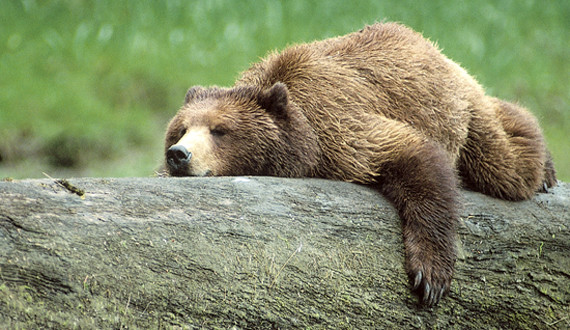
Missoula, Montana—(ENEWSPF)—September 13, 2018
Contacts: Matthew Bishop, Western Environmental Law Center and Bethany Cotton, WildEarth Guardians
Today, a U.S. District Court judge extended a temporary restraining order to block planned grizzly bear trophy hunts in Idaho and Wyoming for 14 more days while he prepares a ruling. The judge may only renew a temporary restraining order such as this once, so if there is no decision in the case over the next 14 days, wildlife advocates will request an injunction stopping the hunt until a decision is made.
“We are gratified Yellowstone’s beloved bears are once again safe from trophy hunters’ bullets,” said Bethany Cotton, wildlife program director for WildEarth Guardians. “We look forward to the judge’s thoughtful resolution of the deep flaws with the feds’ removal of protections from these imperiled bears.”
“We appreciate that Judge Christensen is preventing any unnecessary bloodshed while he deliberates on this important case,” said Matthew Bishop, an attorney with the Western Environmental Law Center. “There is simply no need to rush into a grizzly bear hunt, with potentially devastating consequences for this iconic species, when the merits of that hunt are being reviewed in federal court.”
Background:
Grizzlies in the Yellowstone region remain threatened by dwindling food sources, climate change, small population size, isolation, habitat loss and fragmentation, and high levels of human-caused mortality. The Yellowstone population is isolated and has yet to connect to bears elsewhere in the U.S., including to bears in and around Glacier National Park. Grizzlies also have yet to reclaim key historic habitats, including the Bitterroot Range along the Montana-Idaho border.
Hunted, trapped, and poisoned to near extinction, grizzly bear populations in the contiguous U.S. declined drastically from nearly 50,000 bears to only a few hundred by the 1930s. In response to the decline, the Service designated the species as threatened under the Endangered Species Act in 1975, a move that likely saved them from extinction. The species has since struggled to hang on, with only roughly 1,800 currently surviving in the lower 48 states. Grizzlies remain absent from nearly 98 percent of their historic range. Last year (2017) marked the highest mortality for the Greater Yellowstone Ecosystem’s grizzlies since their ESA listing.
Grizzly bear mortality in 2018 is proceeding at a record pace, even without the added mortalities from trophy hunting which would have claimed up to 22 more. At last count, approximately 690 grizzly bears resided in the Greater Yellowstone region, down from 2015’s count of 717 bears. The last three years had near record-breaking grizzly mortality, with at least 41 bears killed in 2017, and an additional 15 listed as probable mortalities. Of this, at least 32 were killed by humans, and humans were responsible for at least 9 of the 15 probable deaths. As of this writing, 42 grizzlies are on the 2018 known and probable mortalities list for the Greater Yellowstone ecosystem, far outpacing previous years’ rates.
Source: www.westernlaw.org








